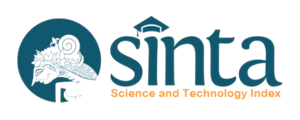THE SPEECH RATE AND VOCABULARY PROFILE OF TED-ED VIDEOS AS EXTENSIVE LISTENING MATERIALS FOR EFL LEARNERS
(1) Universitas Negeri Malang, Indonesia
(2) Universitas Negeri Malang, Indonesia
(*) Corresponding Author
Abstract
Listening proficiency is essential in language acquisition, yet both its classroom time and research are overshadowed by other skills, such as speaking and reading. To tackle the issue of limited classroom time, extensive listening is one of the most convenient and effective solutions. Selecting the materials, however, needs an equally extensive effort; especially for the authentic ones. Therefore, this study aims to investigate the speech rate and vocabulary level of TED-Ed videos as one of the sources of authentic material for extensive listening to determine their suitability for EFL learners. The research used a quantitative descriptive design with purposive sampling. The data collection of Speech Rate is conducted by transcribing the sample videos and dividing the number of words by the length of the video, and the result is measured in terms of WPM (Word Per Minute). To get the vocabulary level, the video transcripts are put into the Vocabkitchen website to analyze the vocabulary CEFR level for each word. From the analysis, the average speech rate of TED-Ed videos is 147.4 WPM and it is suitable for all levels of EFL learners, including beginner level. Meanwhile, the CEFR level of the vocabulary is more suitable for intermediate EFL learners and beyond.
Keywords
Full Text:
PDFReferences
Ahmed, S. (2017). Authentic ELT materials in the language classroom: An overview. Journal of applied linguistics and language research, 4(2), 181-202.
Alm, A. (2013). Extensive listening 2.0 with foreign language podcasts. Innovation in Language Learning and Teaching, 7(3), 266-280. https://doi.org/10.1080/17501229.2013.836207
Anggraeni, C. W., & Indriani, L. (2018). Teachers’ perceptions toward TED-ED in listening class insight the era of disruptive technology. Metathesis: Journal of English Language, Literature, and Teaching, 2(2), 222-235. http://dx.doi.org/10.31002/metathesis.v2i2.925
Barella, Y., & Linarsih, A. (2020). Extensive listening practice in EFL classrooms with a variety of news websites. Pedagogy: Journal of English Language Teaching, 8(1), 43-50.
Bayne, K (2019). Listening via video: Active listening is active learning. Bulletin of Teacher Education Section SEISEN UNIVERSITY, 75-94.
Bragg, D., Bennett, C., Reinecke, K., & Ladner, R. (2018). A large inclusive study of human listening rates. In Proceedings of the 2018 CHI Conference on Human Factors in Computing Systems (pp. 1-12). New York: ACM Digital Library. https://doi.org/10.1145/3173574.3174018.
Cambridge University. (2015). Compiling the EVP. Retrieved from https://www.englishprofile.org/wordlists/compiling-the-evp
Chang, A., Millett, S., & Renandya, W. A. (2019). Developing listening fluency through supported extensive listening practice. RELC Journal, 50(3), 422-438. https://doi.org/10.1177/0033688217751468
Fujita, R. (2017). Effects of speech rate and background noise on EFL learners' listening comprehension of different types of materials. Journal of Asia TEFL, 14(4), 638-653. http://dx.doi.org/10.18823/asiatefl.2017.14.4.4.638
Hariyani, D. (2022). The implementation of TED-Ed videos to learn English (Bachelor’s Thesis). IAIN Salatiga, Indonesia.
Holden III, W. R. (2008). Extensive listening: A new approach to an old problem. Journal of the Faculty of Humanities, University of Toyama, 49, 299-312.
Iswahyuni, I., & Gozali, A. (2019). Extensive listening class on ELT students‘ perspectives. In ICEL 2019: First International Conference on Advances in Education, Humanities, and Language, ICEL 2019, Malang, Indonesia, 23-24 March 2019 (p. 394). European Alliance for Innovation.
Ivone, F. M., & Renandya, W. A. (2019). Extensive listening and viewing in ELT. Teflin Journal, 30(2), 237-256.
Jones, C., Berry, L., & Stevens, C. (2007). Synthesized speech intelligibility and persuasion: Speech rate and non-native listeners. Computer Speech & Language, 21(4), 641-651. http://dx.doi.org/10.1016/j.csl.2007.03.001
Lauwereyns, S. S. (2016). Extensive listening practice using online materials for EFL learners. Journal of Studies in the Humanities, 80, 104-89.
Maftoon, A., Kargozari, H. R., & Azarnoosh, M. (2016). Some guidelines for developing listening materials. In M. Azarnoosh, Z. Zeraatpishe, A. Faravani, & H. R. Kargozari (Eds.), Issues in materials development (pp. 75–81). Rotterdam: Sense Publishers. http://dx.doi.org/10.1007/978-94-6300-432-9
Masrai, A. (2020). Can L2 phonological vocabulary knowledge and listening comprehension be developed through extensive movie viewing? The case of Arab EFL learners. International Journal of Listening, 34(1), 54-69. https://doi.org/10.1080/10904018.2019.1582346
Renandya, W. A. (2011). Extensive listening in the language classroom. In H.P. Widodo & A. Cirocki (eds.), Innovation and creativity in ELT methodology (pp. 15–28). New York: Nova Science Publishers, Inc.
Renandya, W. A., & Farrell, T. S. (2011). ‘Teacher, the tape is too fast!’: Extensive listening in ELT. ELT Journal, 65(1), 52-59. http://dx.doi.org/10.1093/elt/ccq015
Renandya, W. A., & Jacobs, G. M. (2016). Extensive reading and listening in the L2 classroom. In W.A. Renandya & P. Handoyo (eds.), English language teaching today (pp. 97-110). New York, NY: Routledge.
Sabet, M. K., & Mahsefat, H. (2012). The impact of authentic listening materials on elementary EFL learners’ listening skills. International Journal of Applied Linguistics and English Literature, 1(4), 216-229. https://doi.org/10.7575/ijalel.v.1n.4p.216
Sanjmyatav, G., & Sumiya, S. (2020). Using TED-ED as authentic aids to promote EFL acquisition. Mandakh Research, 3, 66-74.
Saputra, Y., & Fatimah, A. S. (2018). The use of TED and YouTube in extensive listening course: Exploring possibilities of autonomy learning. Indonesian JELT, 13(1), 73-84. https://doi.org/10.25170/ijelt.v13i1.1451
Schmitt, N., Jiang, X., & Grabe, W. (2011). The percentage of words known in a text and reading comprehension. The Modern Language Journal, 95(1), 26-43. https://doi.org/10.1111/j.1540-4781.2011.01146.x
TED-Ed YouTube Videos. Retrieved from https://www.youtube.com/@TEDEd
Tomlinson, B. (Ed.). (2011). Materials development in language teaching. Cambridge: Cambridge University Press.
Van Zeeland, H., & Schmitt, N. (2013). Lexical coverage in L1 and L2 listening comprehension: The same or different from reading comprehension? Applied linguistics, 34(4), 457-479. https://doi.org/10.1093/applin/ams074
Vo, Y. (2013). Developing extensive listening for EFL learners using Internet resources. Hawaii Pacific University TESOL Working Paper Series, 11, 29-51.
Wingrove, P. (2017). How suitable are TED talks for academic listening? Journal of English for Academic Purposes, 30, 79-95. https://doi.org/10.1016/j.jeap.2017.10.010
Wulan, D. P. (2021). The effect of using TED-Ed videos on students’ listening skills (a quasi-experimental study at the tenth-grade of SMK Farmasi Tangerang 1 in academic year 2019/2020) (Bachelor's thesis). FITK UIN Syarif Hidayatullah Jakarta, Jakarta, Indonesia.
DOI: https://doi.org/10.24071/llt.v26i2.6414
Refbacks
- There are currently no refbacks.
Copyright (c) 2023 Hidayati Yustina, Suharyadi Suharyadi

This work is licensed under a Creative Commons Attribution-ShareAlike 4.0 International License.
LLT Journal: A Journal on Language and Language Teaching Sinta 1 Certificate
.jpg)

This work is licensed under CC BY-SA.
Creative Commons Attribution-ShareAlike 4.0 International License


.png)

















